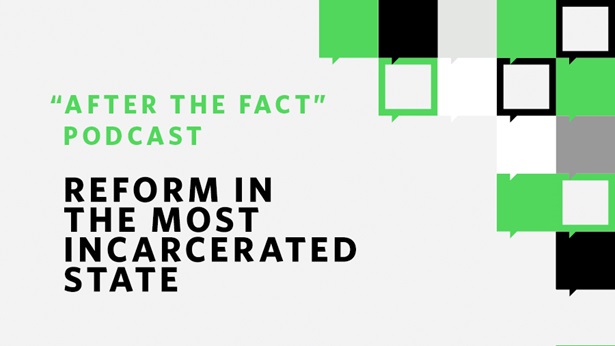National Prison Rate Continues to Decline Amid Sentencing, Re-Entry Reforms
More than two-thirds of states cut crime and imprisonment from 2008-16
After peaking in 2008, the nation’s imprisonment rate fell 11 percent over eight years, reaching its lowest level since 1997, according to an analysis of new federal statistics by The Pew Charitable Trusts. The decline from 2015-16 was 2 percent, much of which was due to a drop in the number of federal prisoners. The rate at which black adults are imprisoned fell 4 percent from 2015-16 and has declined 29 percent over the past decade. The ongoing decrease in imprisonment has occurred alongside long-term reductions in crime. Since 2008, the combined national violent and property crime rate dropped 23 percent, Pew’s analysis shows.
Also since that 2008 peak, 36 states reduced their imprisonment rates, including declines of 15 percent or more in 20 states from diverse regions of the country, such as Alaska, Mississippi, South Carolina, and Connecticut. During the same period, almost every state recorded a decrease in crime with no apparent correlation to imprisonment (see Figure 1).
The latest data, released Jan. 9 by the federal Bureau of Justice Statistics, show that trends in crime and imprisonment continue to be unrelated:
The latest data
FLIP to find out
FLIP to find out
THE LATEST DATA
FLIP to find out
FLIP to find out
FLIP TO FIND OUT
FLIP TO FIND OUT
The annual national violent crime rate increased in 2015 and 2016, but many cities are reporting reductions for 2017, and both violent and total crime rates remain near record lows. National, state, and local crime rates shift for complex and poorly understood reasons, and experts offer a wide range of possible explanations; overall, however, the rates of reported violent and property crime have declined by more than half since their 1991 peaks, falling to levels not seen since the late 1960s.
Starting with Texas in 2007, more than 30 states have adopted sentencing and corrections reforms designed to improve public safety and control taxpayer costs. The reforms vary from state to state, but typically they prioritize prison space for people who have committed serious offenses and invest some of the savings in effective alternatives to incarceration. Research shows that investment in evidence-based re-entry programs reduces recidivism, contributing to declines in crime and imprisonment. Several states have cut return-to-prison rates significantly, including Georgia (35 percent) and Michigan (43 percent) over the past decade.
The lack of a consistent relationship between the crime and imprisonment trends reinforces a growing body of research and expert consensus that imprisonment in many states and the nation as a whole has long since passed the point of diminishing returns. This indicates that local, state, and federal policymakers can adopt additional reforms to reduce imprisonment without jeopardizing public safety.
Adam Gelb is director and Jacob Denney is senior associate of research for The Pew Charitable Trusts’ public safety performance project.









